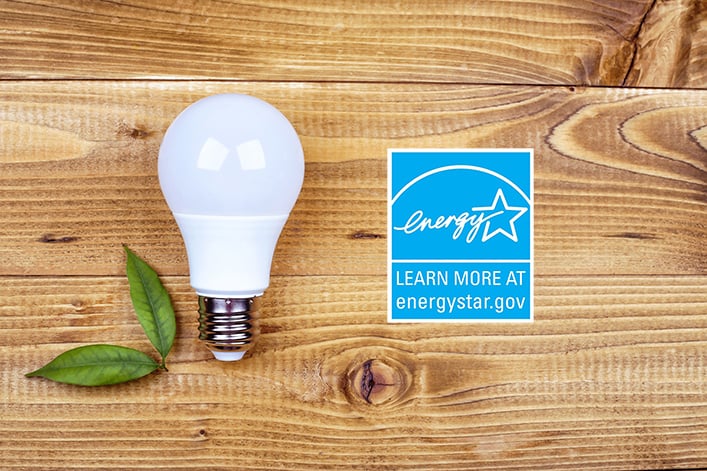How Green is Green Enough?
What is ENERGY STAR?
ENERGY STAR® is a voluntary program established in 1992 by the U.S. Environmental Protection Agency (EPA) to “help businesses and individuals save money and protect our climate through energy efficiency” in the residential, commercial and industrial sectors. With more than 16,000 partners and over 70 product categories eligible for ENERGY STAR certification, this program is helping Americans save money and energy, making our world a little more green everyday.
What does ENERGY STAR do for us?
In 2013, ENERGY STAR helped Americans save more than 380 billion kilowatt-hours (kWh) and more than $30 billion on energy bills. But ENERGY STAR doesn’t just save us money, they protect us. Also in 2013, more than 283 million metric tons of greenhouse gas emissions (GHGs) were prevented. That’s equivalent to the annual electricity use of 40 million homes. The top GHGs recorded in the United States in 2015 were carbon dioxide, methane, nitrous oxide and fluorinated gases.
Homes and commercial buildings accounted for 12 percent of GHGs in 2013: and according to the EPA, the most effective way to reduce these emissions is to use energy efficient products in new construction and retrofit.
How do products become ENERGY STAR certified?
In order to be ENERGY STAR certified, products must go through rigorous testing at third-party, EPA-recognized laboratories around the country. Luminaires, for example are tested in all of the following categories to determine if they meet ENERGY STAR requirements:
- Photometric performance
- Electrical performance
- Thermal performance
- Safety
- Product labeling and packaging
- Lighting toxics reduction
- Warranty
Since the program began, there have been 4.8 billion cumulative ENERGY STAR products sold in the U.S. Because of this meticulous testing process, only the most energy efficient products receive the ENERGY STAR stamp of approval. TCP has the largest combined number of LED and CFL ENERGY STAR compliant lighting products.
Why is it important to be green?
Businesses around the globe are taking steps to become more green by creating sustainability statements and striving to provide us with more energy efficient products. This green movement is determining the needs and desires of consumers, requiring new technology to be invented every day. Electric cars, solar energy panels, recycled paper products and much more have made positive impacts on our environment.
More consumers are searching for energy efficient products to use in their homes and businesses. Whether it’s someone filling their own home or a contractor filling a warehouse, green is the new must-have. The impact a product has on the environment is starting to shape what consumers purchase, where they stay, what they eat and with what companies their loyalties lie.
Energy efficient LED lighting is a great way to strengthen your company’s sustainability statement, and consumers will notice and appreciate the steps you are taking to become more green. It’s more important than ever to show you are an advocate in making our world a better place to live.
With higher efficiency, lower power usage and reduced CO2 emissions, LEDs are a no-brainer when it comes to energy-efficiency. Unlike CFLs, LEDs contain no mercury vapor, posing no environmental threats when disposing of the product.
The ENERGY STAR Guidelines for Energy Management, a guide to help individuals and businesses build more energy efficient programs, is one of many great tools offered by ENERGY STAR. By forming sustainability-focused programs, companies can place themselves as energy efficient leaders in their respective industries.
Related Articles
Workspace Lighting Design Trends
Whether you operate a corporate office or a small business workspace, your lighting solutions should be up-to-date with the latest trends. Modernizing your lighting solutions will not only improve employee productivity and performance, but you will also save money by...
The Impact of Energy-Efficient Lighting on Warehouse Productivity and Efficiency
Proper lighting is a critical factor in warehouse efficiency, safety and overall productivity. Workers in warehouses often operate heavy machinery, move large inventory and navigate expansive spaces – tasks that require optimal visibility. Poor lighting can lead to...
Industrial Lighting Challenges and Their Solutions
Industrial lighting presents unique challenges, from high energy costs and inconsistent light quality to frequent technical issues. These problems can impact productivity, safety, and operational efficiency. In this article, the experts from TCP will explore common...






